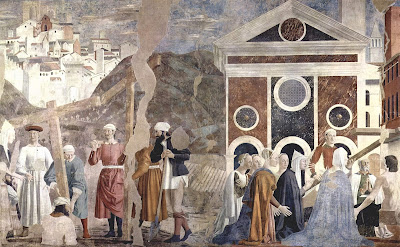The 9th century Miracula Martialis ("Miracles of Martial") gives an idea of how popular he was: it pushes his origin story earlier in time so that he was made a bishop by St. Peter himself (illustrated here in a fresco from the Palais des Papes in Avignon, commissioned by Pope Clement VI from Matteo Giovannetti).
The Miracula gives him credit for evangelizing all of Aquitaine and miracles such as reviving a dead man by touching him with the staff given to him by Peter in the illustration. The medieval compendium of saints' lives called the Golden Legend adds casting out demons to his repertoire.
Martial's intercession was invoked during an epidemic of ergot poisoning in 994. The staff mentioned above (more accurately, a staff that is said to have been Martial's staff) is kept in the Basilica Saint-Seurin in Bordeaux and used in processions during outbreaks of illness to invoke his aid.
His importance in southern Gaul and link (however fictional) to Peter made him attractive to Clement VI, leading to the above-mentioned chapel. His burial site became the Benedictine Abbey of Saint-Martial with a library second only to Cluny's. The chronicler Geoffroy du Breuil worked in the library. The Abbey was damaged so badly in the 19th century that little remained; some manuscripts had been bought by King Louis XV and were therefore saved and are noe in the Bibliotheque Nationale.
Ergot epidemics were quite common in the Middle Ages, so divine intervention was frequently sought. Let's talk about ergot poisoning in the Middle Ages next.







